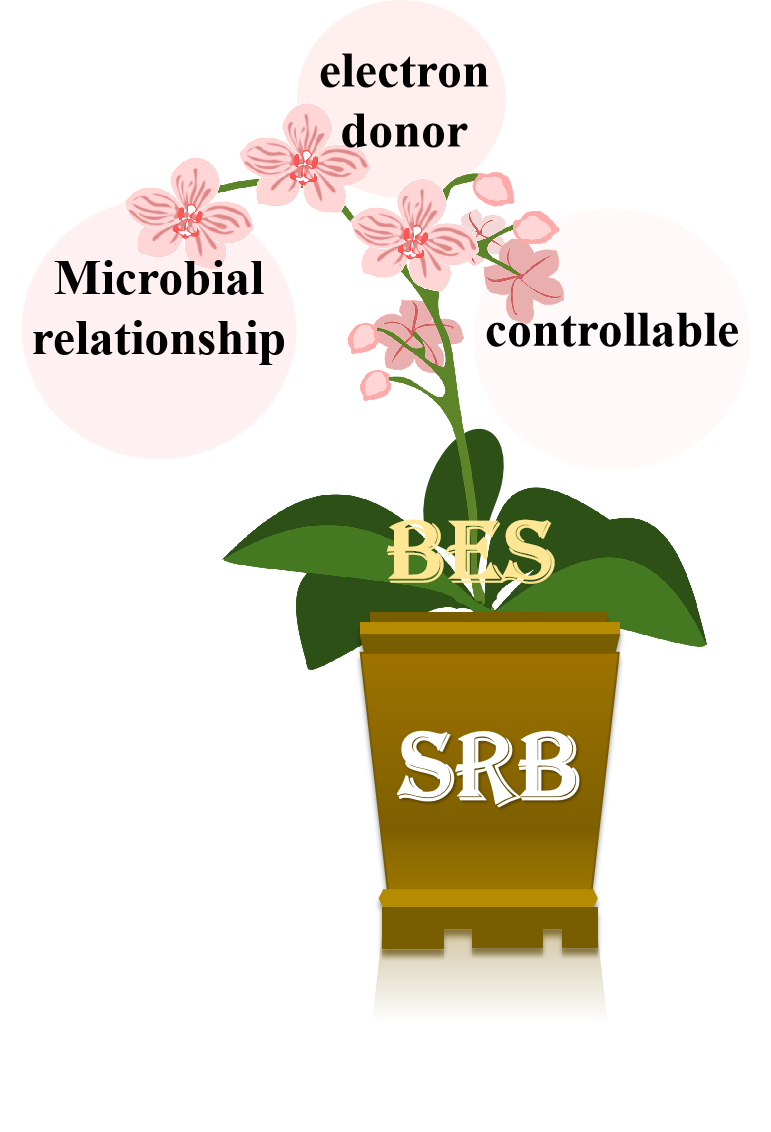 PDF(18694 KB)
PDF(18694 KB)


Influence of Sulfate Reducing Bacteria Competition on Wastewater Treatment in Electrochemical Systems
Yaoyao He, Weichao Li, Zhangyi Chen, Hai Chang, Jie Wang, Yun Wu
Prog Chem ›› 2024, Vol. 36 ›› Issue (10) : 1473-1489.
 PDF(18694 KB)
PDF(18694 KB)
 PDF(18694 KB)
PDF(18694 KB)
Influence of Sulfate Reducing Bacteria Competition on Wastewater Treatment in Electrochemical Systems
Sulfate reducing bacteria (SRB) is a kind of bacteria widely existing in the water environment, which plays an important role in the wastewater treatment process. Bacterial competition in the water treatment process is a common microbial behavior, and it is also a method to improve wastewater treatment efficiency. However, the regulation of SRB flora is affected by many factors in its practical application, which makes it difficult to control. In recent years, the introduction of electrochemistry can interfere with the electron transfer process of SRB flora, and can improve sulfate removal efficiency by regulating the competition process of flora. However, there is a lack of summary on the microbial community behavior of SRB in a water environment and the impact of the microbial electrochemical system on the competitive behavior of SRB. To fill these knowledge gaps, the metabolic behavior of SRB and other flora, the utilization of electron donors by SRB and the factors affecting the competition of SRB flora were reviewed in this study. The relationship between electron transfer pathways and the competition of SRB flora in microbial electrochemistry was summarized, and its future development and challenges were comprehensively discussed.
Contents
1 Introduction
2 The microbial community relationship of sulfate reducing bacteria in water environment
2.1 Symbiotic relationship
2.2 Competitive relationships
2.3 Competitive objects of sulfate-reducing bacteria in different environments
3 The utilization pathways of electron donors in sulfate reducing bacteria
3.1 Thermodynamically utilizing electron donors in SRB
3.2 The effect of electromediation on SRB microbiota
3.3 SRB energy-saving hydrogen production pathway
4 Regulating and controlling factors of sulfate reducing bacterial community
4.1 The influence of external electric field
4.2 Conducting medium
4.3 The impact of carbon source (type and carbon sulfur ratio) on SRB
4.4 OLR and HRT
4.5 pH
4.6 Temperature
5 Conclusion and outlook

sulfate reducing bacteria / microbial competition / microbial electrochemistry / electron donor / electron mediated / carbon sulfur ratio (C/S)
| [1] |
|
| [2] |
|
| [3] |
|
| [4] |
|
| [5] |
|
| [6] |
|
| [7] |
|
| [8] |
|
| [9] |
|
| [10] |
|
| [11] |
|
| [12] |
|
| [13] |
|
| [14] |
|
| [15] |
Pozo, Guillermo,
|
| [16] |
|
| [17] |
|
| [18] |
|
| [19] |
|
| [20] |
|
| [21] |
|
| [22] |
|
| [23] |
|
| [24] |
|
| [25] |
|
| [26] |
|
| [27] |
|
| [28] |
|
| [29] |
|
| [30] |
|
| [31] |
|
| [32] |
|
| [33] |
van Houten B H G W,
|
| [34] |
|
| [35] |
|
| [36] |
|
| [37] |
|
| [38] |
|
| [39] |
|
| [40] |
|
| [41] |
|
| [42] |
|
| [43] |
|
| [44] |
|
| [45] |
|
| [46] |
|
| [47] |
|
| [48] |
|
| [49] |
|
| [50] |
|
| [51] |
|
| [52] |
|
| [53] |
|
| [54] |
|
| [55] |
|
| [56] |
|
| [57] |
|
| [58] |
|
| [59] |
|
| [60] |
|
| [61] |
|
| [62] |
|
| [63] |
|
| [64] |
|
| [65] |
|
| [66] |
|
| [67] |
|
| [68] |
|
| [69] |
|
| [70] |
|
| [71] |
|
| [72] |
|
| [73] |
van den Brand T P H,
|
| [74] |
|
| [75] |
|
| [76] |
|
| [77] |
|
| [78] |
|
| [79] |
|
| [80] |
|
| [81] |
|
| [82] |
|
| [83] |
|
| [84] |
|
| [85] |
|
| [86] |
|
| [87] |
|
| [88] |
|
| [89] |
|
| [90] |
|
| [91] |
|
| [92] |
|
| [93] |
|
| [94] |
|
| [95] |
|
| [96] |
|
| [97] |
|
| [98] |
|
| [99] |
|
| [100] |
|
| [101] |
|
| [102] |
|
| [103] |
|
| [104] |
|
| [105] |
|
| [106] |
|
| [107] |
|
| [108] |
|
| [109] |
|
/
| 〈 |
|
〉 |